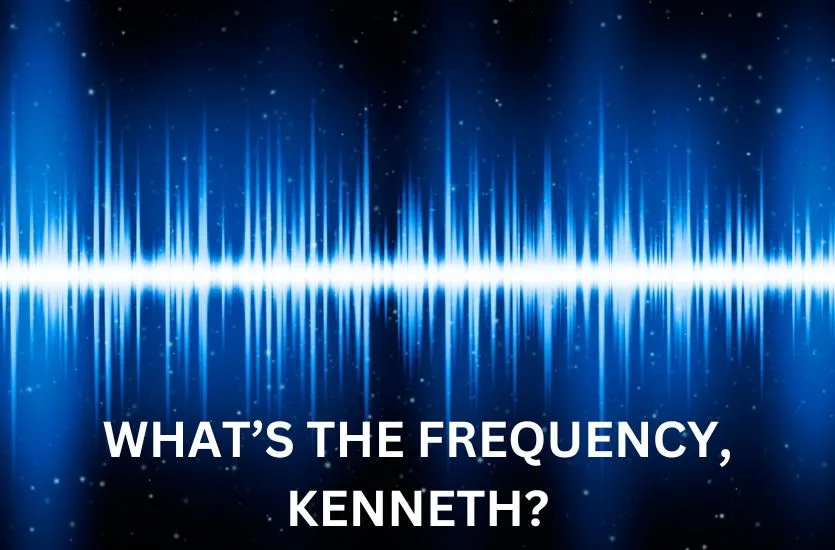We understand that the frequencies used in two-way radios can sometimes be perplexing. This article’s purpose is to break down the differences so you can know you’re using the right devices and frequencies for your needs.
EMCI Wireless is a trusted provider of wireless communication solutions that strongly focuses on ensuring seamless mission-critical communications for government and enterprise sectors. Our valued partnership with Motorola Solutions enables us to offer the latest in two-way radio technology.
How Do Frequency Bands Work?
Before we fully dive into the world of frequency bands, let’s start by defining what they are. In telecommunications, a frequency band, sometimes called just a “band,” is a designated range of frequencies within the electromagnetic spectrum allocated for specific applications.
This electromagnetic spectrum spans from very low frequencies (VLF) to tremendously high frequencies (THF), and it’s divided into various frequency bands, each with a defined upper and lower frequency limit. Lower and higher frequency bands have distinct characteristics that impact their effectiveness in different applications:
- Lower frequency: If you go for a lower frequency, like 150 megahertz (MHz) in the very high frequency (VHF) radio band, you opt for longer-distance communication. These frequencies travel farther, making them suitable for outdoor applications that cover extensive areas.
- Higher Frequency: Conversely, higher frequencies, such as 450 MHz in the ultra high frequency (UHF) radio band, excel at in-building penetration. They’re your go-to choice for communication inside structures like offices, factories, or warehouses.
Now, let’s break it down further. A frequency band is essentially the set of radio frequencies used to transmit signals across a telecommunications network. Each band is defined by its lower and upper boundaries. In total, there are 12 frequency bands within the electromagnetic spectrum, each with its own specified frequency range:
| Band | Abbreviation | ITU No. | Frequency | Wavelength |
| Extremely low frequency | ELF | 1 | 3-30 Hz | 100,000-10,00 km |
| Super low frequency | SLF | 2 | 30-300 Hz | 10,000-1,000 km |
| Ultra low frequency | ULF | 3 | 300-3,000 Hz | 1,000-100 km |
| Very low frequency | VLF | 4 | 3-30 kHz | 100-10 km |
| Low frequency | LF | 5 | 30-300 kHz | 10-1 km |
| Medium frequency | MF | 6 | 300-3,000 kHz | 1,000-100 m |
| High frequency | HF | 7 | 3-30 MHz | 100-10 m |
| Very high frequency | VHF | 8 | 30-300 MHz | 10-1 m |
| Ultra high frequency | UHF | 9 | 300-3,000 MHz | 1-0.1 m |
| Super high frequency | SHF | 10 | 3-30 GHz | 100-10 mm |
| Extremely high frequency | EHF | 11 | 30-300 GHz | 10-1 mm |
| Terahertz/tremendously high frequency | THz/THF | 12 | 300-3,000 GHz | 1-0.1 mm |
While the spectrum of frequency bands is expansive, Most two-way radios found in professional settings use VHF (Very High Frequency) bands or UHF (Ultra High Frequency) bands. However, there is still significant variance among the bands in these categories.
Here’s the key thing to remember: the frequency you choose may have a significant impact on how your two-way radio communications perform. Choosing the right frequency band is a crucial decision, and it can make or break the effectiveness of your communication.

Very High Frequency Band
VHF operates in the frequency range of 30-300 MHz and offers some distinct advantages for two-way radio communication. One of its most prominent features is its exceptional coverage. VHF signals are known for traveling long distances, making them an excellent choice for outdoor applications that require wide-ranging coverage.
VHF signals are also particularly effective at penetrating through obstructions like trees and buildings, making them ideal for use in rural or wooded areas. This means that in scenarios where you need to communicate across vast expanses of farmland or deep into forests, VHF is the best option. Several industries and organizations have found VHF to be a reliable companion for their communication needs:
- Agriculture: Farmers and agricultural workers rely on VHF radios to stay connected across expansive fields and remote areas.
- Transportation: Whether managing logistics or coordinating routes, the transportation industry benefits from VHF’s extensive coverage.
- Road construction: VHF radios keep construction crews connected on job sites where other forms of communication might falter.
- Remote fire and emergency medical services (EMS): First responders in remote and challenging environments depend on VHF to secure seamless communication during emergencies.
- Rural police departments: Law enforcement in rural areas trust VHF for reliable and widespread communication.
- Country utilities: Utility workers in rural regions use VHF radios for maintenance and operations.
- School bus transportation: VHF radios support safe and efficient school bus transportation.
- Oil mining and exploration: In oil, mining, and gas, VHF ensures communication across expansive and often isolated sites.
The most common VHF frequency range for land mobile radio (LMR) systems is referred to as “VHF high band” and spans 138-174 MHz. The frequency split between the transmit (TX) and receive (RX) frequencies can vary wildly as there is no standard offset for VHF.

Ultra High Frequency Band
When it comes to communication in the UHF band, we’re talking about a range of frequencies that span from 380-512 MHz, with a notable exception being the 420-450 MHz band, which is primarily reserved for amateur radio use and generally excluded from indoor radio frequency (RF) coverage enhancement.
The 450-470 MHz band is allocated for LMR use and is the most common commercially available spectrum in UHF, serving a broad spectrum of essential services such as police, fire, government, and various business and two-way radio services. 470-512 MHz is commonly referred to as T-Band, which is occasionally allocated for LMR use in major urbanized areas.
Additionally, the frequency split between the TX and RX frequencies in UHF is typically a 5 MHz offset, with the repeater receiving on the higher frequency and transmitting on the lower frequency. However, for the T-Band spectrum, the frequency split is typically a 3 MHz offset. Several industries and organizations heavily rely on UHF for their communication needs:
- Education: From kindergarten through 12th grade (K-12) schools to colleges and universities, UHF radios keep educational institutions connected.
- Manufacturing: Factories and manufacturing facilities often use UHF for communication between workers and departments.
- In-building construction: The construction industry benefits from UHF radios on job sites where indoor communication is essential.
- Urban transportation: Businesses, like taxi services operating in urban areas, choose UHF for its reliability in crowded city environments.
- Healthcare facilities: Healthcare institutions use UHF radios to ensure fast and efficient communication within their facilities.
- Hotels and resorts: UHF radios help hospitality businesses maintain smooth operations and guest safety.
- Retail: Retailers rely on UHF radios for in-store communication among staff members.
- Property management: Property management companies use UHF radios to coordinate maintenance and security operations.
- Security: Security teams across various industries depend on UHF radios to keep their operations secure and efficient.
What sets UHF apart is its knack for thriving indoors. UHF frequencies are known for their remarkable performance inside buildings, making them an excellent choice for businesses that operate primarily within structures like warehouses and office complexes.
However, UHF is not limited to indoor environments; it’s also incredibly versatile, making it a great choice for businesses that need seamless communication both indoors and outdoors.
700/800 MHz Bands
Public safety radio systems, used by first responders like police, firefighters, and emergency medical services, operate in various portions of the 800 MHz band. This band encompasses a spectrum from 806-824 MHz paired with a spectrum at 851-869 MHz, offering reliable communication for critical services.
Typically, the frequency split in LMR 800 MHz frequencies is separated by a 45 MHz offset, with the repeater receiving on the lower frequency and transmitting on the higher frequency.
The 700 MHz band spans 698-806 MHz and was made available due to the digital television (TV) transition. Its strategic placement, just above the remaining TV broadcast channels, grants it excellent signal propagation capabilities. This means that 700 MHz signals can easily penetrate buildings and cover larger geographic areas with fewer infrastructure requirements than higher-frequency bands.
Typically, the frequency split in LMR 700 MHz frequencies is separated by a 30 MHz offset, with the repeater transmitting on the lower frequency and receiving on the higher frequency.
In 2008, the Federal Communications Commission auctioned licenses for commercial use in the 700 MHz Band, paving the way for mobile broadband services for smartphones, tablets, and other devices. These bands have advanced technology and devices, enabling seamless communication for public safety and commercial applications.
900 MHz Band
The 900 MHz band, encompassing the frequency range of 896-901/935-940 MHz, provides a critical communication channel — offering 10 MHz of spectrum. This valuable spectrum finds extensive use among utilities, refiners, railroads, and other essential infrastructure operators in the U.S., primarily for two-way voice communications.
The 900 MHz band is highly regarded for its reliability and effectiveness in ensuring uninterrupted communication for various industries. Typically, the frequency split in LMR 900 MHz frequencies is separated by a 39 MHz offset, with the repeater receiving on the lower frequency and transmitting on the higher frequency.
The advantages of utilizing the 900 MHz band for specific applications are noteworthy. Its efficiency and dedicated use for two-way voice communication make it a preferred choice for businesses that require secure and instant communication.
Industries and organizations that commonly rely on the 900 MHz band for their communication needs span various sectors. One specific device tailored for this frequency range is the Motorola R7 900 MHz Digital Portable Radio.
The Motorola R7 isn’t just a radio; it’s a productivity tool. With features like text messaging, it facilitates discreet communication when voice isn’t appropriate, ensuring seamless information sharing without disrupting workflow.
Whether you’re in construction, hospitality, manufacturing, or any industry requiring instant, reliable communication, the Motorola R7 steps up to the challenge, breaking down communication barriers and keeping teams efficiently connected. This device welcomes a new era of business communication.
Citizens Band Radio Frequencies
Citizens band (CB) radios operate primarily on the 27 MHz frequency range, which is subdivided into 40 channels, each spaced 10 kHz apart. This range is specifically designated for personal communication and is part of the high-frequency (HF) spectrum, allowing for short-range, two-way radio transmissions.
The channels are available for use without a licensing requirement in many countries, making CB radios accessible to the general public for purposes such as trucking communication, emergency responses, and recreational use. CB radios are reliable in rural settings, but their relatively low bandwidth limits data transmission capacity, making them an impractical choice for many professional applications.

Choosing the Right Radio Frequency Band
Different frequencies offer varying advantages depending on the environment and intended use. For example, UHF frequencies are better for urban areas with many obstacles, while VHF frequencies work well over longer distances in open spaces. As a result, various industries and organizations have come to rely on specific frequency ranges to meet their communication needs:
- VHF: Widely used by agriculture; transportation; road construction; remote fire and EMS; rural police departments; country utilities; school bus transportation; and oil and mining exploration. For example, rural police departments rely on VHF to cover extensive areas effectively.
- UHF: Embraced by education, manufacturing, in-building construction, urban transportation services like taxis, hospitals, hotels, retail, property management, and security teams. For instance, in-building construction teams benefit from UHF’s indoor performance.
- 7/800 MHz bands: Preferred by public safety agencies and some commercial businesses. Police, firefighters, and emergency services use them for seamless, critical communication.
- 900 MHz band: Utilities, refiners, railroads, and other critical infrastructure operators rely on the 900 MHz band for two-way voice communication to secure efficient and reliable connectivity.
Using the right two-way radio can enable organizations to operate more efficiently, reduce workflow disruptions, and foster collaboration between employees, so it’s essential to assess the specific characteristics of different frequencies and radio systems. This will ensure that you find the best two-way radio for your organization’s needs.
EMCI Wireless brings a wealth of expertise to assist businesses and organizations in making the right frequency band choices. We understand that effective communication is the backbone of your operations, and we are here to guide you through the process.
Contact us today or request a quote, and let’s ensure your wireless communication solutions meet your requirements effectively.






